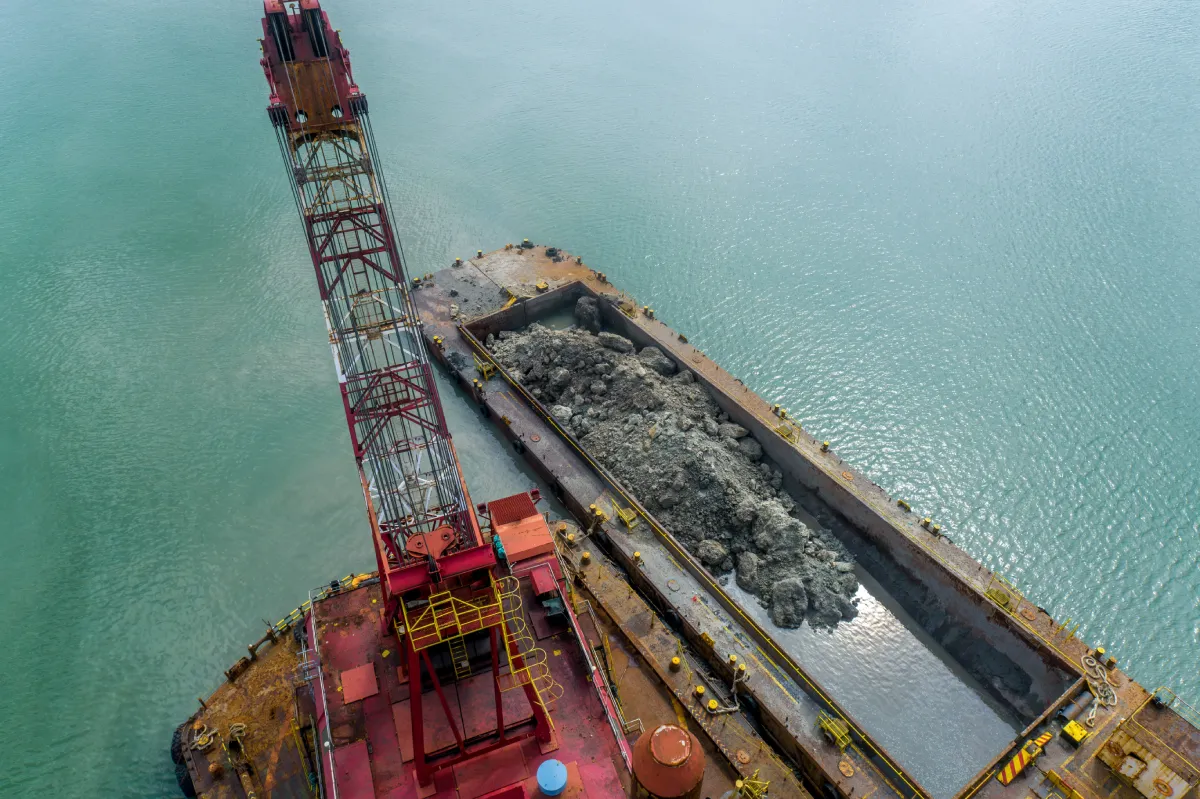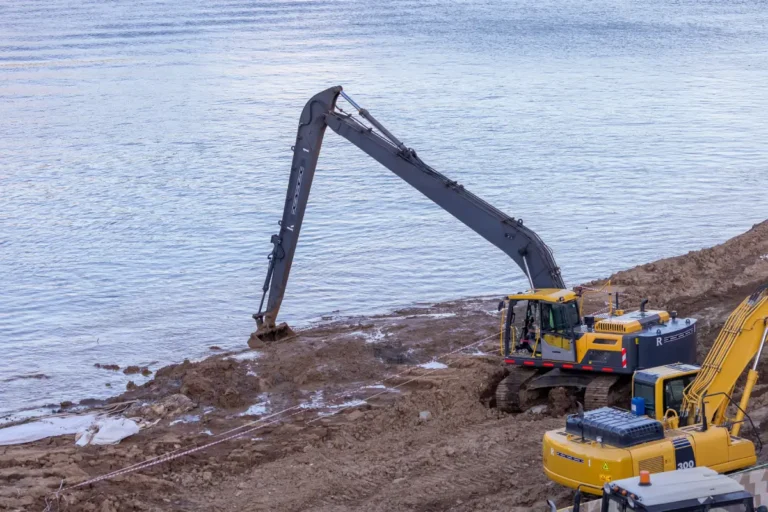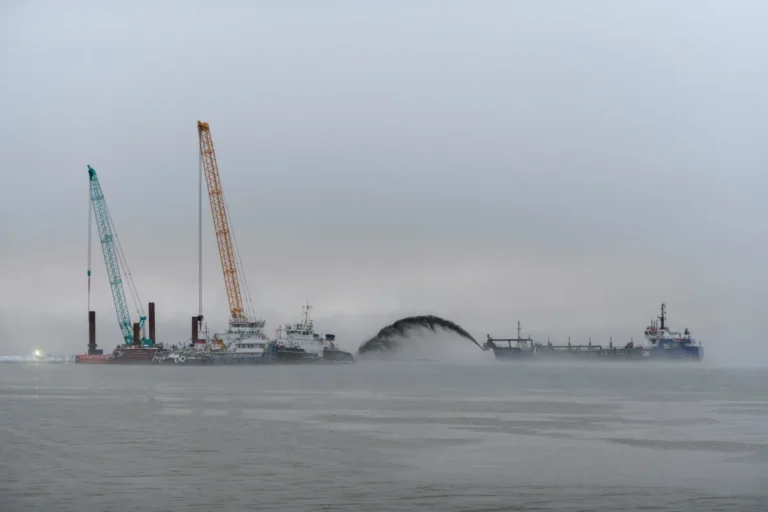In today’s industrial landscape, dredging has become an essential maintenance and operational process for facilities that rely on ponds, lagoons, and containment basins to manage water, sludge, and process byproducts. Industrial dredging services ensure these systems function efficiently, safely, and in full compliance with environmental standards. From hydraulic and mechanical dredging to advanced remote-operated systems, the methods and equipment used are engineered to handle high-solids, viscous, or hazardous materials while minimizing disruption to plant operations. By combining precision engineering, automation, and environmental control, modern dredging solutions help industries maintain productivity and sustainability across every phase of their water management cycle.
Understanding Industrial Dredging Services
Industrial dredging services are essential to maintaining the functionality and compliance of facilities that depend on ponds, basins, and lagoons for water management, processing, or waste containment. Unlike marine or environmental dredging—which focuses on open-water navigation or ecological restoration—industrial dredging is performed in contained systems designed for industrial use. Its goal is to manage sediment, sludge, and process byproducts that accumulate over time and threaten plant efficiency, safety, and regulatory performance.
In this context, industrial dredging differs in precision and control. The equipment must handle viscous, abrasive, and sometimes chemically reactive materials under restricted access conditions. Pumps, hydraulic systems, and remote-operated dredges are selected not for large-scale sediment relocation but for continuous, high-solids removal in confined industrial environments. The focus is on maintaining production uptime, preserving containment integrity, and meeting wastewater discharge or solids-handling standards.
These operations are commonly carried out in power generation cooling ponds, refinery wastewater lagoons, food and beverage treatment sumps, paper mill clarifiers, and chemical process basins. Each site presents unique conditions—ranging from fluctuating sludge densities to corrosive or high-temperature fluids—requiring customized dredging solutions that balance performance, safety, and environmental compliance.
Within this specialized scope, industrial pond and lagoon dredging services serve as a critical maintenance function. They enable consistent process flow, prevent overflow incidents, and preserve the designed capacity of treatment systems, ensuring that industries continue to operate efficiently even under demanding conditions.
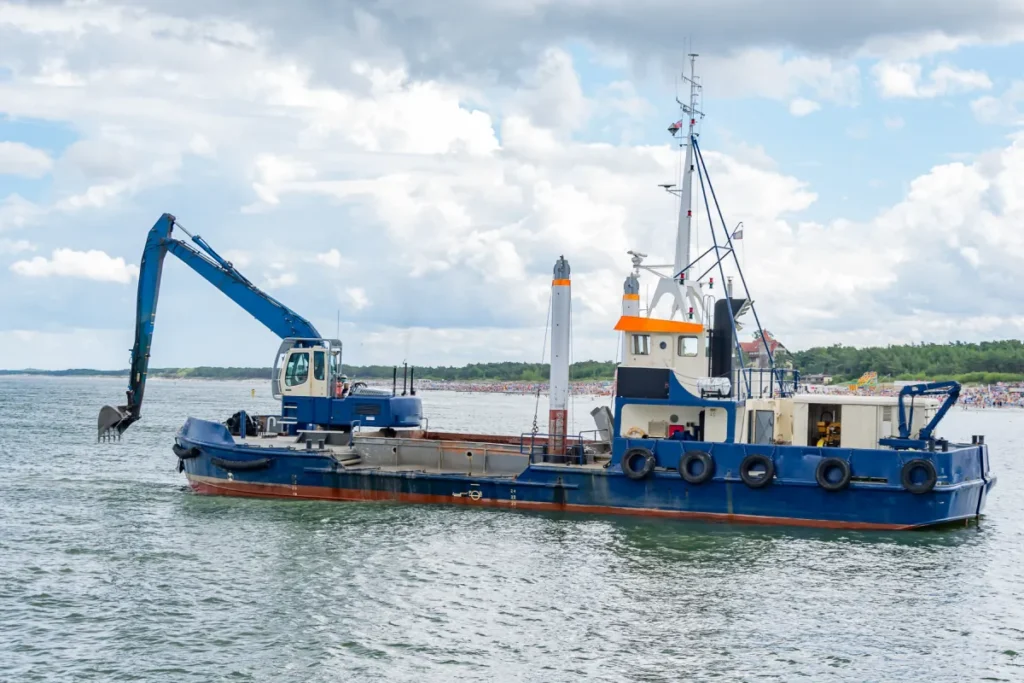
Key Methods Used in Industrial Dredging
Industrial dredging operations rely on specialized methods tailored to the type of material being removed, the environment in which it’s located, and the operational constraints of the facility. Choosing the right dredging method ensures optimal solids removal, consistent production rates, and minimal downtime. The four most common approaches used in industrial dredging services are outlined below.
Hydraulic Dredging
Hydraulic dredging is the most widely used method for industrial pond and lagoon dredging services due to its ability to pump sediment-laden slurry through pipelines continuously. This process employs powerful slurry pumps to move sludge, sediment, and slurry directly to dewatering or containment areas. It’s particularly effective in industrial lagoons, wastewater clarifiers, and sludge ponds, where draining or mechanical excavation would disrupt operations.
The method supports non-invasive sediment removal, allowing facilities to maintain fluid levels while dredging. Its scalability to high-solids and abrasive materials makes it ideal for continuous industrial use, reducing manual handling and improving operational efficiency.
Mechanical Dredging
Mechanical dredging involves the use of excavators, backhoes, or cable-operated grabs to remove compacted sludge or settled debris physically. It’s typically employed when materials are too dense for hydraulic pumping or when the pond or lagoon can be partially or fully dewatered.
This approach provides a high degree of precision and control, making it suitable for confined spaces, localized sediment removal, or cleanouts where the depth and density of material require direct access. It’s often used during maintenance shutdowns or when structural repairs to the basin are planned.
Remote-Operated and Amphibious Systems
In hazardous, deep, or restricted-access basins, remote-operated dredging systems (ROVs) are used to perform dredging without human entry. These submersible dredges are controlled from the surface and fitted with high-efficiency pumps, cutters, or agitators to handle toxic or high-viscosity sludge safely.
Amphibious excavators serve industrial sites with soft banks or shallow lagoons where floating and land-based equipment cannot operate effectively. Their hybrid design allows movement across water, sludge, and land, making them invaluable for industrial lagoon dredging and remote facility maintenance.
Hybrid Approaches
Some industrial applications require a combination of hydraulic and mechanical methods to handle highly viscous, thixotropic, or semi-solid materials. Systems integrating cutter heads, jetting rings, or auger-style agitators can liquefy thick sludge before it’s pumped, maintaining a steady flow rate and reducing clogging.
These hybrid configurations are particularly beneficial for industries dealing with materials like tailings, lime slurry, or biosolids—where standard methods alone are not efficient. This flexibility allows operators to adapt to variable conditions and achieve consistent performance across complex dredging environments.
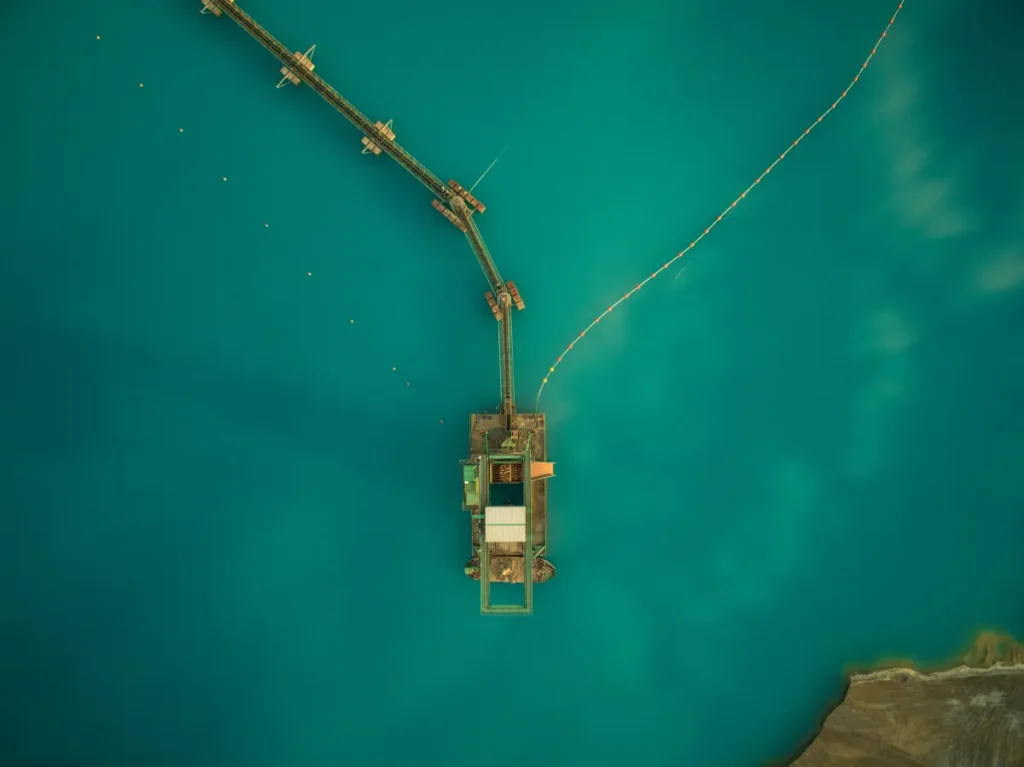
Industrial Dredging Equipment Overview
The success of any industrial dredging service depends heavily on selecting and configuring the right equipment for the application. Industrial ponds, lagoons, and containment basins often present unique challenges—ranging from limited access and high-solids content to corrosive or abrasive materials—making equipment versatility and reliability critical to operational efficiency.
Primary Dredging Units
At the core of most industrial dredging operations are high-performance pumping systems designed to move solids-laden fluids efficiently.
- Hydraulic Pumps: These heavy-duty slurry pumps are engineered to handle high-viscosity fluids and abrasive solids without clogging. Their open rotor and recessed impeller designs enable consistent flow even with irregular materials.
- Submersible Dredges: Deployed directly into the sludge or sediment layer, submersible units provide strong suction and localized agitation, ideal for continuous removal in lagoons, clarifiers, and basins with limited access.
- Self-Priming Systems: Self-priming dredge pumps are used when remote or intermittent operations require quick startup and minimal supervision. Their ability to prime and re-prime automatically reduces downtime and simplifies maintenance in field environments.
Supporting Systems
Effective dredging relies on a network of supporting systems that extend performance and ensure stable operations:
- Booster Pumps: Installed along discharge pipelines to maintain pressure and flow across long pumping distances.
- Hydraulic Power Units (HPUs): Provide power for hydraulic-driven dredges and agitators, ensuring reliable performance in remote or portable setups.
- Pipeline Floats and Discharge Hoses: Keep slurry lines buoyant and properly aligned, preventing kinks or damage and ensuring consistent slurry transport from the dredge to disposal or dewatering areas.
Agitation and Solids Control Tools
Industrial applications often involve compacted, thixotropic, or uneven sediment layers. To maintain flowability and reduce clogging, dredges are equipped with mechanical agitators and mixing systems:
- Cutter Heads: Mechanically break down compacted sludge or clay before suction.
- Auger Dredges: Deliver uniform removal across the lagoon floor, minimizing turbidity.
- Egg-Beater Mixers: Ideal for liquefying thick or sticky sludge, ensuring the pump receives a consistent feed of material.
Automation and Monitoring
Modern industrial pond and lagoon dredging services increasingly integrate real-time automation and monitoring tools to improve precision and efficiency:
- RTK-GPS and Sonar Mapping: Provide accurate dredge positioning and depth measurement, ensuring uniform material removal.
- Flow Meters and Pressure Sensors: Monitor slurry velocity and density to maintain consistent production rates.
- Production Tracking Systems: Enable operators to measure cubic yards per hour and solids throughput for improved project control and reporting.
Custom-Built Setups for Industrial Environments
Because every industrial site has unique operational and environmental demands, many dredging systems are custom-engineered for the application. These setups are designed to function within confined footprints, handle variable solids concentrations, and withstand corrosive or high-temperature fluids. Custom configurations—combining the right pump type, power source, and automation package—allow operators to achieve optimal results while minimizing equipment wear, downtime, and energy use across complex industrial dredging projects.
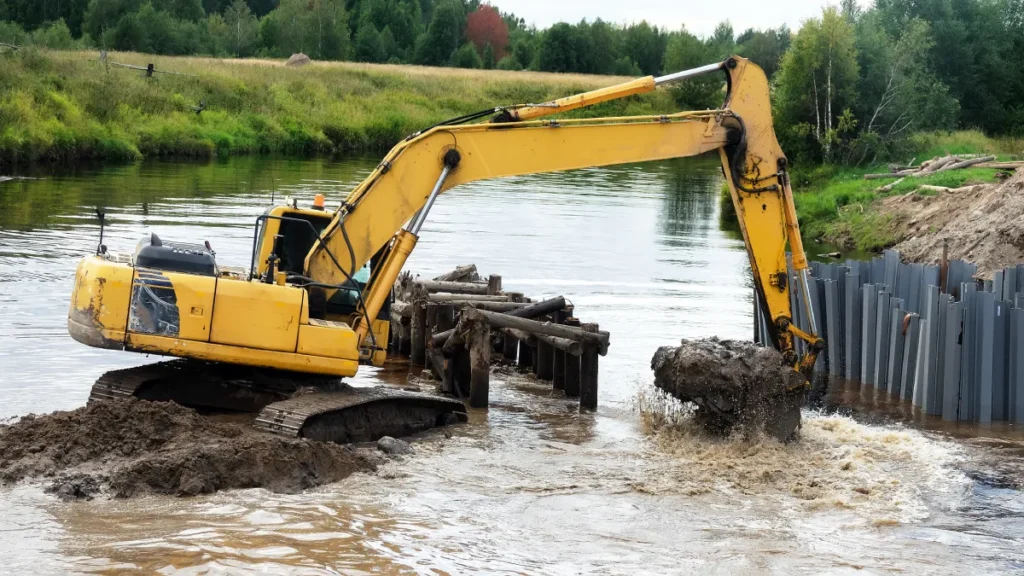
Operational Challenges and How to Overcome Them
Industrial dredging operations take place in some of the most demanding environments—where sludge composition, access limitations, and safety standards create complex engineering and logistical challenges. The success of any industrial dredging service depends on anticipating these conditions and applying proven strategies to overcome them without disrupting plant operations.
Handling Highly Viscous or Chemically Reactive Materials
Many industrial lagoons and process ponds contain dense, thixotropic, or chemically active materials such as lime slurry, polymer sludge, or oil-based residues. These materials resist flow and can solidify under pressure, leading to inconsistent pump performance or system blockages.
To manage such materials effectively, operators often rely on agitated dredging systems—combining submersible pumps with jetting rings, egg-beater mixers, or cutter heads to liquefy solids before suction. Selecting pumps with open rotor or recessed impeller designs minimizes clogging, while using corrosion-resistant alloys or coatings protects against chemical degradation.
Maintaining Suction Consistency in Variable Sediment Beds
Industrial basins rarely have uniform sediment profiles. Sludge layers can vary in depth, density, and water content, making it difficult to maintain a stable suction flow. When suction fluctuates, production efficiency drops, and mechanical strain on pumps increases.
This challenge is addressed through adjustable dredge heads and automated pump control systems that regulate suction pressure in real time. Incorporating sonar-based mapping and RTK-GPS positioning also helps operators track dredge elevation and maintain consistent material removal, even in uneven pond or lagoon conditions.
Managing Wear-Life in Abrasive Applications
Abrasive materials such as sand, fly ash, and mineral fines accelerate wear on impellers, liners, and discharge hoses, leading to costly downtime and replacement cycles. To extend service life, many industrial dredging setups use hardened wear components, ceramic-lined hoses, and replaceable pump liners.
Regular wear inspections and proactive component rotation schedules are essential. Monitoring slurry density and flow velocity also helps operators maintain optimal conditions that reduce turbulence and mechanical abrasion within the pump system.
Addressing Space, Access, and Environmental Safety Constraints
Industrial sites often present restricted access points, narrow containment structures, or overhead obstructions that limit conventional dredge deployment. In addition, safety standards require minimizing worker exposure to hazardous materials or unstable ground conditions.
These constraints are overcome using remote-operated submersible dredges and amphibious systems capable of operating in confined or hazardous zones without human entry. Low-profile equipment and modular power units can be transported through narrow pathways or assembled directly on-site, reducing downtime and safety risks. Integrating real-time monitoring and containment systems ensures the dredging process remains controlled and compliant with environmental and occupational safety regulations.
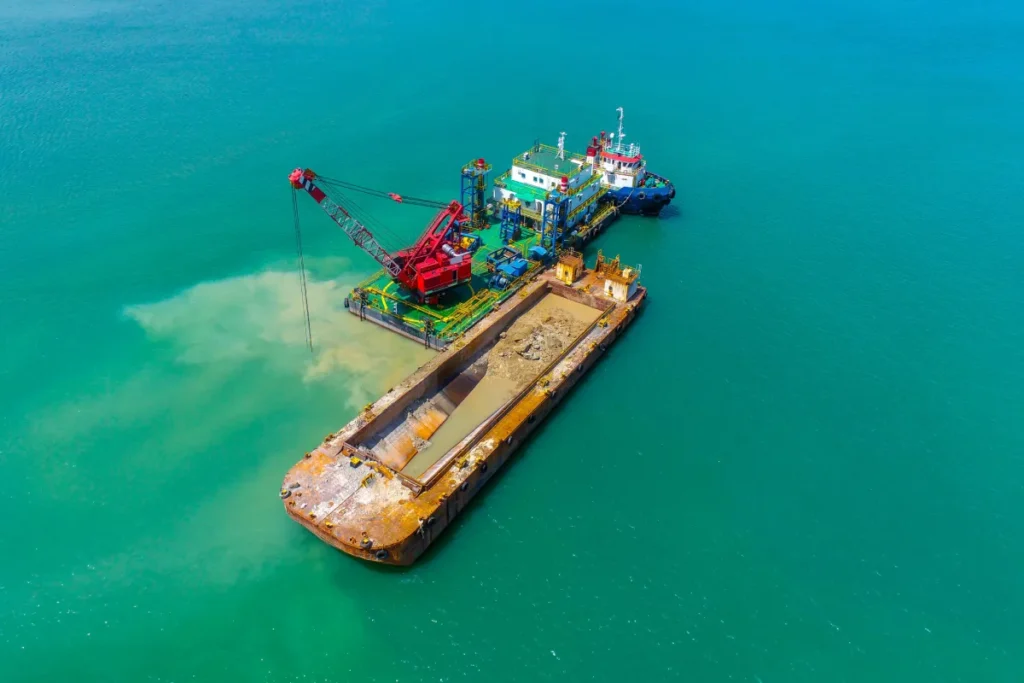
Best Practices for Efficient Industrial Dredging Operations
Executing industrial dredging services efficiently requires more than just the right equipment—it depends on precise planning, continuous monitoring, and disciplined maintenance. Industrial sites, especially those with ponds, lagoons, or treatment basins, demand a methodical approach that balances production performance, safety, and compliance. The following best practices form the foundation of reliable, high-efficiency dredging operations.
Conducting Pre-Dredge Assessments
Every successful dredging project begins with a thorough assessment of site conditions. Sludge profiling, solids sampling, and sonar-based depth surveys provide critical data on sediment thickness, density, and composition. This information helps engineers determine the right pump capacity, discharge length, and agitation method. A well-documented pre-dredge survey also establishes a production baseline and helps predict potential obstacles, such as debris accumulation or buried obstructions, before mobilization.
Matching Dredge Type to Sludge Characteristics
Different sludge types require different dredging technologies. High-viscosity materials benefit from agitated hydraulic dredges with jetting rings or auger heads, while lightweight sediment may only need a standard submersible slurry pump. Operators should evaluate parameters like solids concentration, particle size distribution, and pH levels to select equipment that prevents cavitation, clogging, or excessive wear. Proper dredge selection not only improves performance but also extends component life and reduces operational costs.
Establishing Real-Time Monitoring and Production Control
Integrating automation and feedback systems allows operators to maintain consistent production while reacting quickly to changing conditions. Tools such as flow meters, density sensors, and RTK-GPS tracking provide live performance data that supports accurate depth control, slurry density optimization, and efficient fuel or power use. Continuous monitoring also enables remote operation of dredges in hazardous or inaccessible areas, improving both safety and output reliability.
Implementing Solids Dewatering and Disposal Compliance Measures
Once removed, dredged material must be properly handled, dewatered, and disposed of in accordance with EPA and local environmental regulations. Selecting appropriate dewatering technologies—such as geotextile tubes, filter presses, or settling ponds—depends on the solids concentration and contaminant profile. Partnering dredging operations with compliant disposal or reuse strategies (e.g., landfill cover, cement production feedstock) ensures environmental responsibility and reduces project liabilities.
Preventive Maintenance and Wear Tracking of Critical Components
Industrial dredging involves continuous exposure to abrasion, vibration, and high loads, making preventive maintenance a non-negotiable aspect of operations. Routine inspection of impellers, liners, hoses, and seals helps detect early wear patterns before they lead to mechanical failure. Implementing wear tracking programs using operational hours, slurry density data, and production logs enables predictive maintenance scheduling—keeping downtime minimal and extending the lifespan of key dredging assets.
Environmental and Regulatory Considerations
Environmental stewardship is a critical aspect of industrial dredging services, particularly when working within regulated facilities such as wastewater plants, refineries, or chemical processing sites. These operations must balance productivity with strict adherence to environmental laws and sustainability standards. Every phase of dredging—from sludge removal to disposal—must be executed with precision to prevent contamination, ensure compliance, and protect surrounding ecosystems.
Waste Handling and Water Quality Compliance
Industrial dredging projects often involve the removal of sludge containing hydrocarbons, heavy metals, or process residues that fall under EPA and local environmental regulations. Compliance begins with waste characterization—testing dredged material for chemical and biological content to determine proper handling and disposal methods.
Closed-loop dredging systems, lined containment areas, and secondary filtration stages are often employed to prevent contaminated effluent from re-entering waterways. Continuous water sampling and turbidity monitoring ensure that discharge meets permissible limits, maintaining regulatory conformity throughout the operation.
Safe Handling of Contaminated or Hazardous Sludge
Certain lagoons and ponds store hazardous or reactive materials, such as caustic residues or petrochemical sludge. In such cases, the choice of equipment and operational method directly affects safety. Remote-operated dredges and submersible systems are preferred to eliminate the need for manual entry, reducing exposure to harmful substances.
Materials are often stabilized or neutralized on-site using chemical treatment or pH adjustment before dewatering and disposal. Implementing containment barriers, vapor suppression systems, and corrosion-resistant components further ensures worker safety and environmental control.
Minimizing Turbidity and Secondary Pollution
One of the primary environmental challenges in industrial dredging is controlling turbidity—the suspension of fine particles that can degrade water quality and affect downstream treatment processes. Operators achieve turbidity reduction through controlled dredge head positioning, low-velocity pumping, and precision agitation tools such as auger or shrouded cutter heads.
Additional safeguards include silt curtains, sediment traps, and discharge filtration systems, all of which help prevent secondary pollution and protect adjacent water bodies or treatment circuits.
Aligning Industrial Dredging with Sustainability and ESG Goals
Modern industrial dredging strategies are evolving to meet broader sustainability and ESG (Environmental, Social, and Governance) objectives. This includes optimizing fuel efficiency through electric or hybrid-powered dredging systems, reusing dredged materials where feasible, and adopting technologies that reduce noise and emissions.
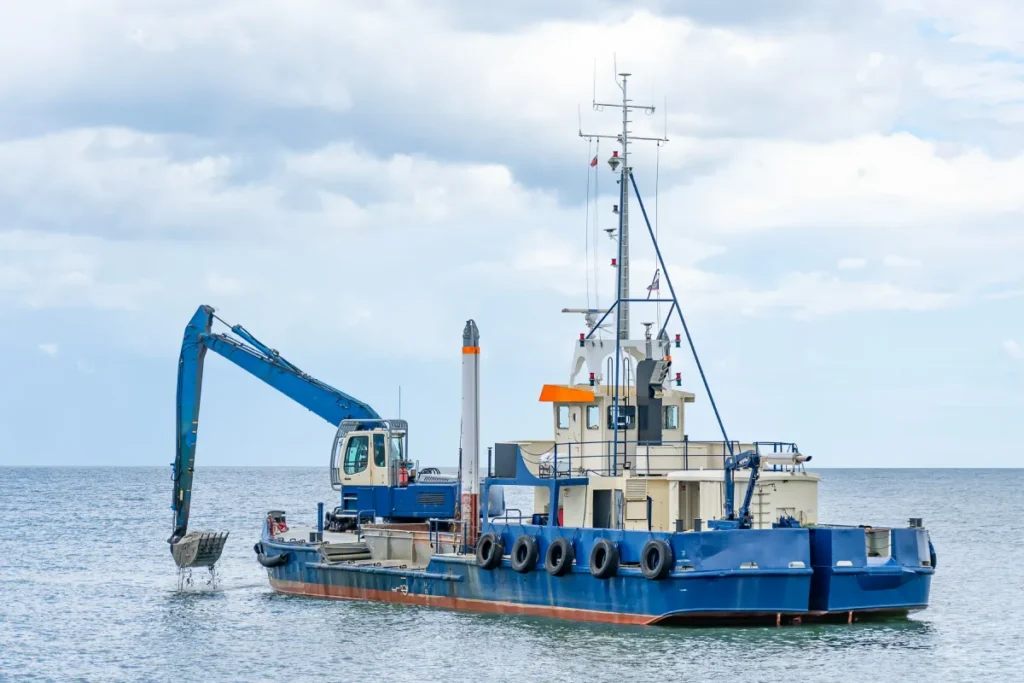
The Long-Term Value of Professional Industrial Dredging Services
Engaging professional industrial dredging services delivers measurable, long-term value that extends far beyond immediate sludge removal. When performed with the right technology, engineering oversight, and compliance protocols, dredging becomes a preventive asset management strategy—one that safeguards infrastructure, reduces lifecycle costs, and enhances environmental performance across industrial operations.
Increased Storage and Process Capacity
Over time, industrial ponds, clarifiers, and lagoons lose capacity as sediment and byproducts accumulate. Professional dredging restores that lost volume, allowing these systems to handle design-level inflows and maintain proper retention times. For facilities such as wastewater treatment plants or refineries, this directly improves throughput, sedimentation efficiency, and process stability—reducing the frequency of overflows or emergency cleanouts.
Improved Operational Efficiency and Reduced Downtime
Routine, well-managed dredging prevents unexpected shutdowns caused by sludge buildup, pump blockage, or flow restriction. By maintaining optimal operating depths and clear pathways for fluid circulation, facilities experience consistent hydraulic performance and fewer disruptions to ongoing production. When dredging is executed using remote-operated or continuous hydraulic systems, operations can remain active even during maintenance, minimizing production losses.
Extended Infrastructure Life and Lower Maintenance Costs
Accumulated sludge is not only a space issue—it’s corrosive and erosive to liners, pipes, and concrete structures. Regular dredging removes this material before it can degrade containment systems or compromise equipment performance. As a result, facilities see longer service life from assets such as pumps, liners, and basins, along with lower repair and replacement expenses over time.
Assurance of Compliance and Environmental Responsibility
Industrial sites are subject to evolving environmental regulations that govern sludge disposal, effluent quality, and sediment management. Partnering with experienced dredging providers ensures all operations meet EPA, local, and industry-specific compliance standards, backed by accurate documentation and sampling. Beyond compliance, professional dredging contributes to a company’s broader environmental and ESG objectives—reducing the risk of pollution events while reinforcing a proactive, sustainable approach to water and waste management.
Sustaining Industrial Performance Through Smart Dredging
Professional industrial dredging services are far more than a maintenance task—they are a strategic investment in operational reliability, safety, and environmental stewardship. When industrial ponds, lagoons, and basins are properly maintained, facilities can sustain higher production efficiency, extend asset life, and meet regulatory obligations without interruption. At WA Dredge Contractors, we specialize in delivering tailored dredging solutions for complex industrial environments, combining advanced equipment and proven expertise to help clients maintain long-term system performance. Contact us today to discuss how we can help optimize your next dredging project with a reliable, cost-effective, and compliant solution.


